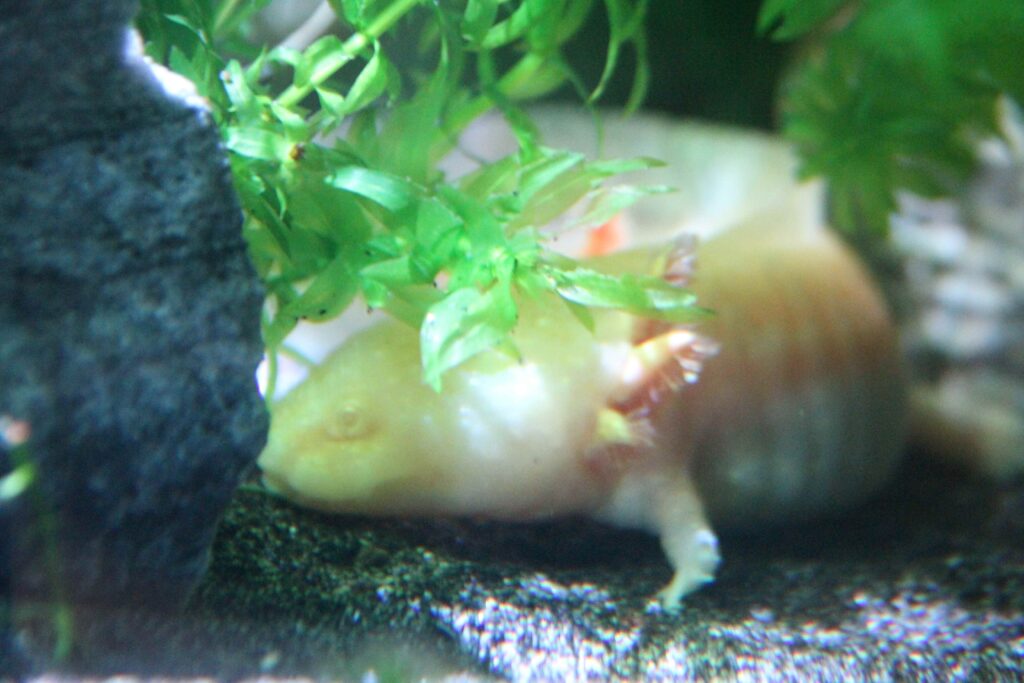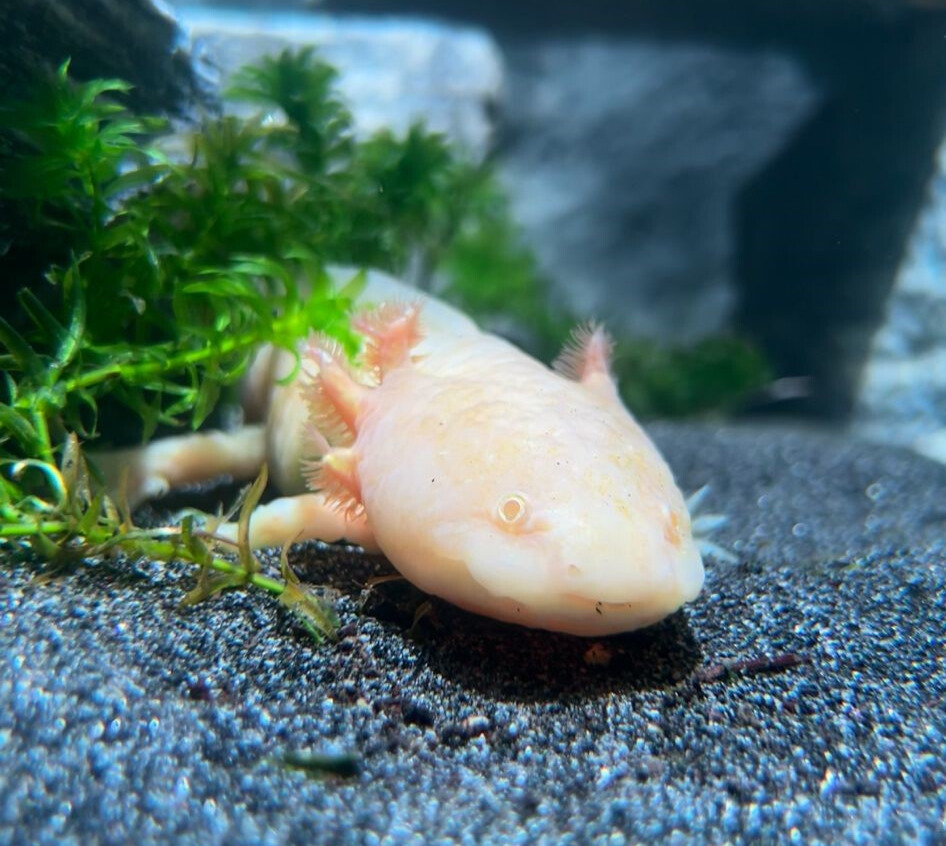We’re very excited here at Blue Planet Aquarium to announce our harem of Axolotls have a new enclosure in our Frog Zone exhibit. Due to their youthful and friendly appearance, they’re often called “water puppies”. Before you come in to meet these guys in person, lets have a look into their habitat, lifecycle and conservation status.

Where do Axolotls Live?
Native to Mexico, Axolotls can be found in the sheltered shallows of freshwater canals and lakes surrounding Mexico City. Murky water and aquatic plants in abundance characterise these areas, but they do serve an important purpose for the Axolotls that call these areas home. The aquatic plants provide Axolotls with shelter, food and a place for them to lay eggs.
Axolotls play a crucial role in the ecosystem they inhabit and are considered a “keystone species”. As carnivores, they help maintain the balance of their aquatic environment by controlling the population of various small animals including insects, small fish, and crustaceans. Their diet helps keep these populations in check, preventing any one species from overpopulating and disrupting the delicate balance of the ecosystem.
In addition, as an indicator species, Axolotls help scientists gauge the health of their environment. Their sensitivity to changes in water quality, temperature, and pollution levels makes them a biological warning system. A decline in Axolotl populations often signals broader environmental changes or degradation.
Pollution and habitat loss has meant that the Axolotl population has dwindled dramatically in the wild. The International Union for the Conservation of Nature (IUCN) lists them as critically endangered, with estimates suggesting only 50-1,000 adults remaining in the wild.
Life Cycle Stages of an Axolotl
Axolotls belong to the amphibian family, although their life cycle looks very different to its counterparts such as a Frogs Lifecycle. A phenomenon called Neoteny is exhibited in Axolotls, this means that their larval features are retained throughout their lives. After reaching sexual maturity, the Axolotl keeps their feathery gills, elongated tail and aquatic lifestyle. Technically they can metamorphose into the land-dwelling Salamander under very specific conditions, this is extremely rare in the wild.
Reproduction of an Axolotl is quite interesting, they’re egg laying amphibians and they reach sexual maturity at around 18 months old. Typically, they lay hundreds of eggs on aquatic plants, these then hatch after a few weeks. The baby Axolotls are fully functioning miniature versions of their fully grown counter parts.
These fascinating species have amazing regenerative abilities. They can regrow entire limbs, including bones, muscles and nerves, even after amputation! Axolotls can also regenerate portions of their heart, spinal cord and even their brain!

Conservation Status
This adorable amphibian isn’t just known for its smile and feathery gills. In the wild, Axolotls are classified as critically endangered. The International Union for the Conservation of Nature (IUCN) lists them as critically endangered, with habitat loss, pollution, and invasive species causing their numbers to plummet.
Conservation efforts are now being made to protect this fascinating species. This includes captive breeding programmes, habitat restoration and public education about their ecological impact. With these continued conservation efforts, it is hoped that Axolotls can be saved from the brink of extinction.
Come See for Yourself!
We invite you to visit Blue Planet Aquarium to meet our new axolotl residents! You’ll be able to observe these fascinating creatures up close in our Frog Zone and learn more about them from our knowledgeable staff.
